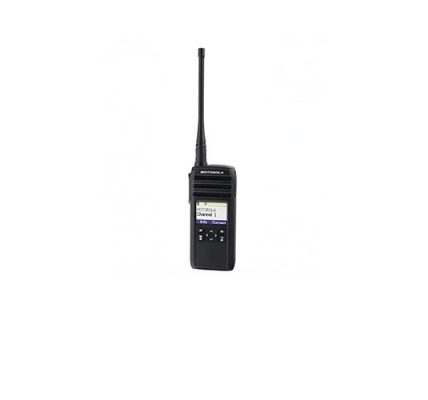
Augmented Reality in Service Industry
Augmented reality is transforming field service, and industrial companies are investing in this new technology. It’s a way to lower costs for training, assembly, product support and other areas of the value chain.
For example, AR allows senior technicians to record their instructions for use by new technicians without requiring them to travel to the site. This helps to prevent knowledge loss as senior technicians retire.
Training
Using AR for training opens up new opportunities for service leaders looking to empower their workers, improve the customer experience and reduce costs. The technology can help close the skills gap, especially with a younger workforce that is comfortable with digital tools.
AR training increases engagement by offering a more imaginative and augmented reality in service industry exciting learning experience. It also helps with retention by allowing employees to practice tasks on their own in a safe and controlled environment without the risk of damaging equipment or customers’ property.
The use of AR can improve training efficiency by delivering key information and instructions at the right time in the context of the job. For example, a technician can view 3D service instructions on their hands-free headset or mobile device while working on an actual machine, improving repair times and first-time fix rates.
In addition, an AR solution can capture data from automation and control systems, secondary sensors and asset management systems to show relevant information on the worksite at any given point. This can enable factory workers to monitor performance and identify issues in advance, reducing costly downtime and boosting productivity.
AR also enables remote troubleshooting, connecting field technicians with remote experts to provide real-time visual guidance while performing a task. This can improve knowledge transfer, reduce truck rolls and support more efficient operations.
Customer Experience
AR offers a more immersive, interactive experience that engages customers and improves retention. This also allows companies to offer more personalized content that is relevant to the specific customer’s needs. This can lead to improved brand trust, increased sales, and better overall performance.
Unlike traditional videoconferencing, AR experiences are delivered through software-based applications that can be downloaded to a mobile device and used off-line. This eliminates the need for a headset and allows companies to easily scale their AR solutions as needed.
In addition to improving productivity and customer satisfaction, augmented reality can reduce field service costs. Field service technicians can use AR to instantly access important supplemental information when servicing equipment, improving first-time fix rates and decreasing repair times. Additionally, experienced technicians can record their AR sessions to share with new technicians, further reducing training expenses and speeding up time to competency.
AR is a powerful tool that can help enhance and transform field service for industrial enterprises. However, companies must weigh the pros and cons of implementing this technology to determine if it’s a good fit for their business. By defining clear objectives, choosing the right technology, creating engaging content, ensuring user adoption, and monitoring KPIs, companies can maximize the potential of their augmented reality strategies.
Maintenance
In addition to providing repair guides, AR can also display performance data from machinery and systems in real time. This helps maintenance teams proactively detect errors and reduce downtime. It also allows them to optimize maintenance schedules, enabling companies to maximize production flexibility and quality.
In a similar vein, using AR can help connect field technicians with remote experts. This can be done in both asynchronous and synchronous ways, depending on the needs of the company. For example, an experienced technician can use an AR app to record their point of view and share it with a newer worker for onboarding purposes. This way, the company can quickly onboard a new technician without relying on expensive mentoring programs.
As a result, it is easier to upskill employees, which can lead to more efficient maintenance processes. As a result, this technology has the potential to change the way companies do business. However, implementing new ideas can be challenging when workers are used to following physical manuals. That is why AR is a great tool to use as a source of just-in-time training.
Ultimately, AR is a powerful technology that can make significant changes in the service industry. Using it to provide clear and easy-to-follow repair guides can help improve customer satisfaction, increase productivity, and decrease downtime. With the right implementation, it can be a major asset for both new and veteran field service technicians.
Repair
Getting repairs done quickly and accurately is the core of field service. Using augmented reality, technicians can get step-by-step instructions superimposed on the physical equipment they’re working on. This eliminates the need to read lengthy manuals and reduces distractions, allowing them to focus on their work. This approach improves first-time fix rates and reduces repair time.
When working with complex machinery, AR enables technicians to visualize the internal components without disassembling them. This helps to identify issues faster and prevents expensive mistakes. This is especially valuable in industries that require precision, such as aerospace or medical equipment.
A field technician on a job can also connect with experts in remote locations to receive visual guidance on how to solve an issue or complete a maintenance task. This can save companies money on ar smart glasses travel and training costs, as well as time spent waiting for an expert to arrive on site.
Aside from training and reducing skill gaps, AR can also help field service companies increase their profits by providing customers with more convenient service experiences. This is accomplished by offering remote support that reduces the number of calls requiring a technician to travel. The result is increased customer satisfaction and loyalty, which leads to more repeat business for the repair company. ServicePower’s IoT and AR-powered field service platform makes it possible for industrial enterprises to meet these goals while keeping employees productive.


